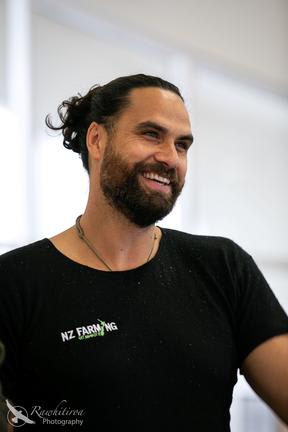Tame Malcolm has always been captivated by te ngahere - the forest. As a kid, his whānau would share knowledge about the bush, and he would keenly soak it all up.
“Any chance to go out with uncles or aunties, my parents, to go bush or anything like that, I jumped at the opportunity,” he says.
“None of them thought they were teaching, they’d just sort of tell you their life and their experiences and there’s so much kura huna [important knowledge] in their kōrero, so many hidden treasures."
Now, Malcolm advocates using customary Māori methods to get rid of pests and is the operations manager at Te Tira Whakamātaki - a not-for-profit Māori biodiversity network.
He's also doing a PhD that investigates what pest management would look like if it were designed and implemented from a te ao Māori perspective.

Tame Malcolm Photo: Te Rawhitiroa Bosch
Much of his research is informed by traditional narratives, kōrero from tūpuna, from kaumātua, he says.
“These people walking around, they are [a] living thesis, they are basically PhDs, they’re doctors and professors without any title.”
Part of his research is looking at what kawa and tikanga could govern pest management and, as we look to achieve Predator Free 2050, the need for new tech like gene editing and toxins.
Te Tira Whakamātaki has adopted traditional kai harvesting practices into possum control.
“All we were doing is rather than trapping by the book so to speak, or standard operating procedure, we were using traditional methods to catch birds, to catch possums.
“In February we were trapping trees where the cicadas were coming out of their shells, knowing that our tūpuna would trap those because the rats would eat the cicadas, so we’re putting our possum traps in those locations.”
Each month, a different tikanga was followed. As a result there was a two percent increase in trappings, Malcolm says.
“So, all of a sudden we see that actually our mātauranga can supercharge our pest control efforts, especially if we’re wanting to achieve something like Predator Free 2050, eradicating possum, stoats and rats by 2050.”
Malcolm believes exploring new technologies like gene editing will be key to achieving a predator free New Zealand.
One such technology is CRISPR/Cas9, discovered in 2016.
He says while editing for predator control is still a long way off, the technology allows for editing that would support eradication.
"If they change the possum’s DNA, so that the possum only produces male or female [offspring] and makes it dominant, every generation after that will be female, let’s say. If you give it enough cycles, enough generations, you’re left with just females and then it breeds itself out,” he says.
“People say stuff like that is against our kawa, against whakapapa. Rangi Matamua makes a good point, he says if they believe in whakapapa, surely they must believe in Māui and Māui was able to change his DNA to turn into a kererū, tuna...so where does the conversation go after that?”
Te Arawa descend from Pūhaorangi, a celestial being, he says. “So that DNA was mixed with Te Kuraimonoa from Earth and so, gene mixing there.”
While Malcolm personally advocates for gene editing, he can only speak to the knowledge within Te Arawa, he says.
“I’m keen to make an informed decision based on as much knowledge as possible.”
It’s a conversation that needs to be led by Māori if it’s for Māori, he says.
“It helps having the conversation in safe spaces. A lot of the Māori communities I work with, when they’re keen to talk about it I can share my views, my beliefs about it and they can share theirs. What no one likes is being told what to think or how to think.”
Malcolm wants to see the work of his whānau, like that with rākau, being used more widely.
“We’ve shown that it supercharges control efforts. And this is just me and my cuzzies sort of having a crack at it, roping in my dad to go check some traps or to help me out where I can, my mum getting involved and so here’s us doing this as a whānau as part of my research but if we can supercharge or explore this across the country, no doubt it will add to the growing efforts to achieve Predator Free 2050.”
There’s an innate willingness of Māori to protect their whenua, he says.
“A think a lot of it is, just where do they start. In the big scheme of things you have iwi, hapū, whānau, even marae prioritizing health, wellbeing and all the other environmental issues. Sometimes pest management can be lower down on the list but the majority of the Māori economy is founded on biosecurity, on pest management.
“Without our lands we have no economy, we have no resources to help our people so that’s where I encourage Māori communities, iwi right through to people on the ground – we've got to protect our whenua.”

